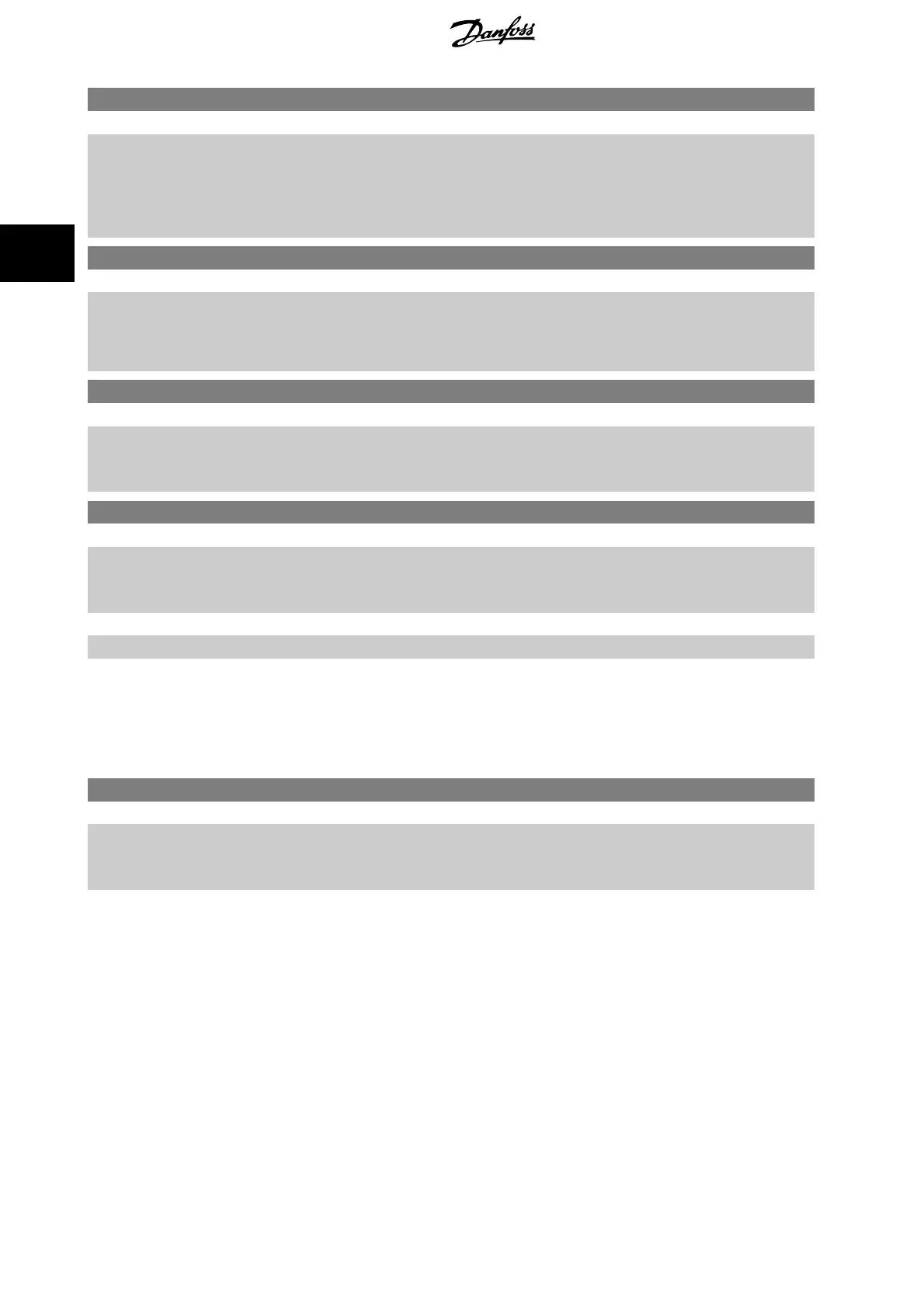20-72 PID Output Change
Range: Function:
0.10 N/A* [0.01 - 0.50 N/A] This parameter sets the magnitude of step change during autotuning. The value is a percentage of
full speed. I.e. if maximum output frequency inpar. 4-13
Motor Speed High Limit [RPM]
/
par. 4-14
Motor Speed High Limit [Hz]
is set to 50Hz, 0.10 is 10% of 50Hz, which is 5Hz. This
parameter should be set to a value resulting in feedback changes of between 10% and 20% for
best tuning accuracy.
20-73 Minimum Feedback Level
Range: Function:
-999999.00
0 Proc-
essCtrlU-
nit*
[Application dependant] The minimum allowable feedback level should be entered here in User units as defined in
par. 20-12
Reference/Feedback Unit
. If the level falls below par. 20-73
Minimum Feedback Level
,
autotuning is aborted and an error message will appear on the LCP.
20-74 Maximum Feedback Level
Range: Function:
999999.000
ProcessCtr-
lUnit*
[Application dependant] The maximum allowable feedback level should be entered here in User units as defined in
par. 20-12
Reference/Feedback Unit
. If the level rises above par. 20-74
Maximum Feedback Level
,
autotuning is aborted and an error message will appear on the LCP.
20-79 PID Autotuning
Option: Function:
This parameter starts the PID autotuning sequence. Once the autotuning has successfully completed
and the settings have been accepted or rejected by the user, by pressing [OK] or [Cancel] buttons
on the LCP at the end of tuning, this parameter is reset to [0] Disabled.
[0] * Disabled
[1] Enabled
3.18.7 20-8* PID Basic Settings
This parameter group is used to configure the basic operation of the frequency converter’s PID Controller, including how it responds to a feedback that
is above or below the setpoint, the speed at which it first starts functioning, and when it will indicate that the system has reached the setpoint.
20-81 PID Normal/ Inverse Control
Option: Function:
[0] * Normal
Normal
[0] causes the frequency converter’s output frequency to decrease when the feedback is
greater than the setpoint reference. This is common for pressure-controlled supply fan and pump
applications.
[1] Inverse
Inverse
[1] causes the frequency converter’s output frequency to increase when the feedback is
greater than the setpoint reference. This is common for temperature-controlled cooling applications,
such as cooling towers.
3 Parameter Description VLT
®
HVAC Drive Programming Guide
186
MG.11.C9.02 - VLT
®
is a registered Danfoss trademark
3

